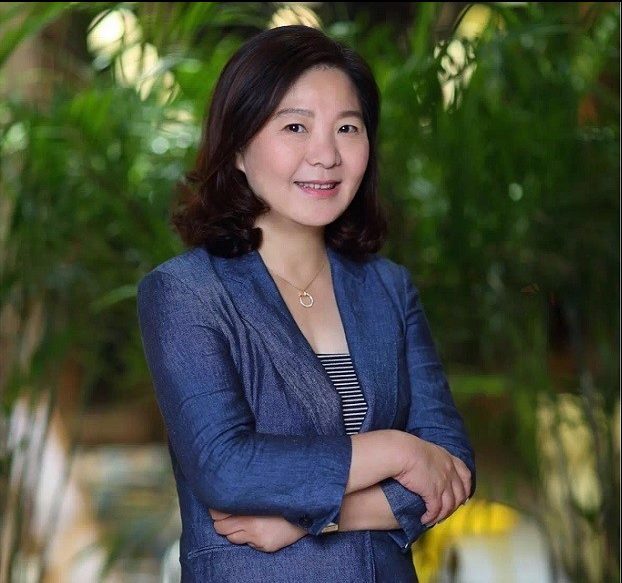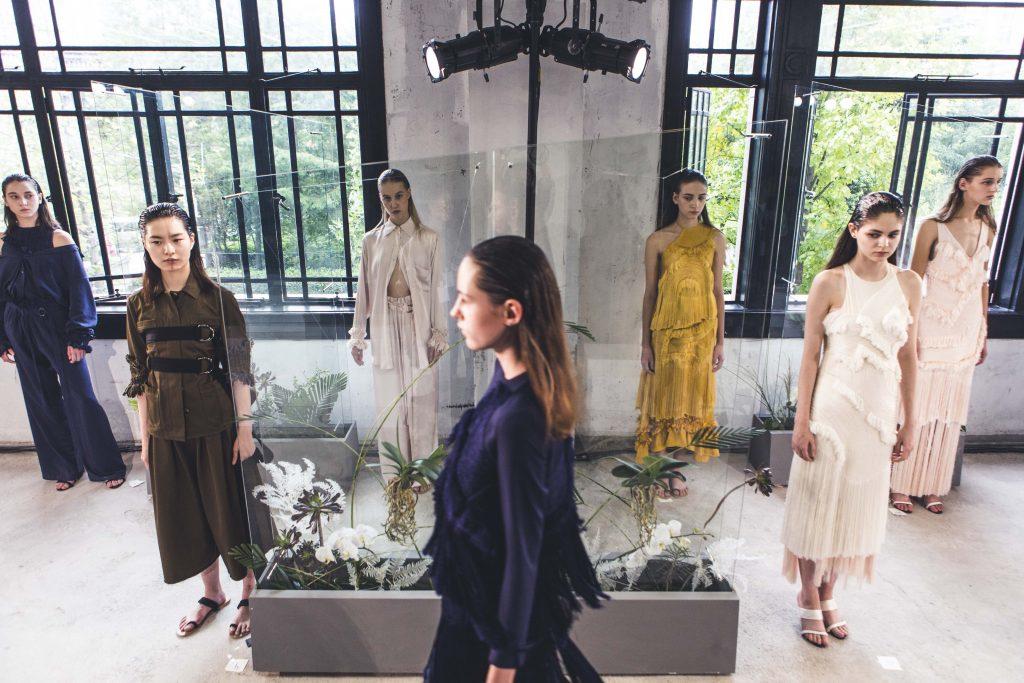14 Years of Shanghai Fashion Week: An Interview with Xiaolei LvяМThe Woman Behind China's Most Influential Fashion Event
June 6,2017
Around mid-October 2016, the hotels and restaurants in the vicinity of the Shanghai Fashion Week venues were filled with fashionistas dressed up in the latest global designs. The impact of Shanghai Fashion Week reaches far beyond the fashion industry, as it has developed into an extravaganza for the entire city. Madame Xiaolei Lv, the vice secretary of the Shanghai Fashion Week Committee and general manager of Shanghai International Fashion Centre talked to Luxe.CO about the past, present and future of Shanghai Fashion Week.

Fourteen Years of Shanghai Fashion Week and Original Chinese Design
Although Shanghai Fashion Week is already 14 years old, Xiaolei Lv still remembers how it all began: тIt was around 2003т2004, a period when international brands were flocking into China. Big global brands were entering the market through Shanghai Fashion Week and we were gaining a lot of experience from this biannual event. Yet, as we thought about the mission of Shanghai Fashion Week, we realised that there would be no vitality to it if we continued to rely on the presence of global brands. So in 2006 we took a bold step and set off in a new direction: to scout for and support original Chinese design.т
In 2006 and 2007, international luxury brands began to reduce their presence on the stage of Shanghai Fashion Week, replaced by a great deal of as-yet-unknown independent fashion brands. Lv says: тLooking back, Shanghai Design Week has had its ups and downs alongside the Chinese economy, the retail market, and fashion brands and designers; and the road has been rocky indeed.т

Above: New collection by independent Chinese designer, Xuzhi Chen, launched at Shanghai Fashion Week
When asked how the decision to transform was made, Lv recalled that from 2007 to 2008, as Chinese art schools and fashion academies expanded the scale of their admissions, more and more fashion students were beginning to start up their own businesses after graduation, and so were those who had studied abroad. Upon noticing the increase in independent designers, Lv started to wonder: where do all these graduates go? What do they do? Hence, she hoped to offer Chinese designers support and help through the Shanghai Fashion Week platform. She believes that local designer brands that are successful help to contribute to the emergence of more good Chinese designers.
In a way, Shanghai Fashion Week has become dedicated to incubating local Chinese design brands, helping independent designers through the entrepreneurial stage, and enabling them to flourish in the Chinese fashion industry. Today, with the retail industry undergoing major changes, Lv hopes the Shanghai Fashion Week platform can push Chinese department stores to change the way they buy. That could mean seeking out independent designer brands and learning from multi brand stores, stores that stock a range of fashion brands and pride themselves on smart and savvy buying.
Each showroom, each designer brand is an industry intruder
For historical reasons, China does not have a well-developed idea of тbuyingт in the way fashion stories do in the West. More recently, however, a Chinese approach to buying has developed, alongside the growth of independent designer brands. Lv doesnтt believe that thereтs any reason to hold back this natural growth, particularly through the increasing number of multi brand stores. As every storeТ has to survive the selections made by buyers, designers, consumers and the market, every store will eventually find its own path. Thus, to provide more options for select stores and designers, the MODE Shanghai Fashion Trade Show (MODE Shanghai) was born.

Above: At the Ontime Show of MODE Shanghai
As the major media partner of MODE Shanghai in 2016, Luxe.CO witnessed the trade showтs success and communicated this to every showroom manager and designer brand. It's clear that the Chinese buyer market is booming: the number of buyers and their expertise are increasing; aside from buyers from metropolitan areas, many come from second and third-tier cities or even more remote areas. According to statistics provided by Shanghai Fashion Week, around 8,000 people attended the main exhibition, MODE Shanghai, from 13 to 16 October. Nearly 40% of attendees were buyers, a 27% increase on last year. In addition, the number of buyers who showed up on day one had increased by 60%.

After its fourth year, MODE Shanghai is still young compared to other global fashion expos, yet its impact continues to expand. The organising committee for Shanghai Fashion Week started the MODE Shanghai Fashion Trade Show from scratch. Lv laughs as she remembers: тthe entire organising committee was formed of only a little more than 20 people in an office. We wanted to do a trade show, so we went ahead and did it. We had no experience in traditional trade shows so we did it тunprofessionallyт, using the showroom format, which turned out to be very successful. It is probably a surprise to discover that only three people on our team are in charge of all the showroom work. Fortunately, at this yearтs MODE Shanghai, we gleaned some good ideas from the brands, showrooms and designers present as well.т

Above: Group photo of the Shanghai Fashion Week organising committee
The Future of Shanghai FashionТ Week
For independent designers, the spring has arrived. With the aid of Shanghai Fashion Weekтs years of hard work, numerous independent designer brands have been able to grow and mature.
Behind this industryтs rise lie the immense demands of the market. Chinese spending on luxury products now totals one-third of global spending. Since reaching the stage of purchasing global luxury brands, Chinese consumers have gained a certain knowledge of aesthetics and a taste for high-quality products and global fashion. On arrival at Shanghai Fashion Week, foreign designers often find their products surprisingly well-received, and this reflects the elevation of purchasing power and aesthetics in China.

When we enquired about the future plans for Shanghai Fashion Week, Lv was clear that, rather than trying to be the fifth largest international fashion week (after Paris, Milan, London, and New York), Shanghai should attach more importance to becoming the worldтs most vigorous and dynamic fashion week. For Lv, Shanghai Fashion Week needs to be unique, displaying its own characteristics and personality, and bringing fashion and business fever to the city, as well as the whole of China. As part of this, MODE Shanghai provides extra support for talented designers who are not business-minded. It has also set up the TANC Showroom, which is dedicated to helping rising independent designers. Lv believes that only once the number of designers in China has reached a certain level will the best designer brands shine through.
For Lv, among the large number of designers in China, in the near future there will be a few who will become top Chinese designers with significant global influence, similar to Japanтs Yohji Yamamoto and Rei Kawakubo.












Comments